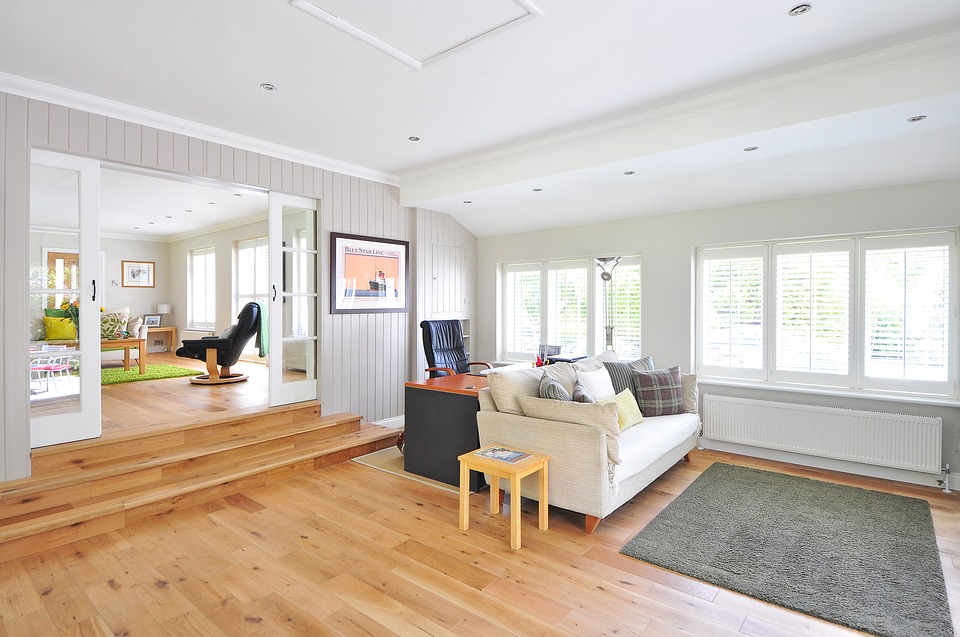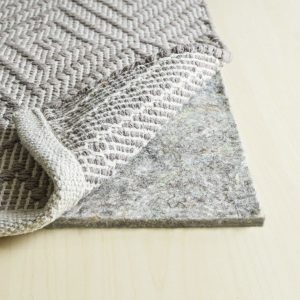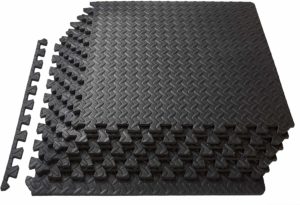While some noise in shared living spaces is normal, if you can clearly hear your neighbors’ conversations or TV through your walls, floor or ceiling, you have a noise problem. So Today, we are looking at soundproofing hardwood floors in condos.
According to soundproofing experts, the majority of calls they receive from people concerning noise are condo dwellers. One even said as high as 80% of the calls are from condominiums.
This is not coming as a surprise because condos have the open floor designs which make it easier for noise to travel from one point to the other.
Condo owners are not taking the necessary steps to insulate their building as such those who live in these residents can easily hear the noise been made by the upstairs neighbors or downstairs neighbors or even the ones you are sharing a wall with.

Footsteps of those above or below you can be heard or the other person you are sharing a wall with who has his/her television very loud.
Don’t get me wrong. Condos or townhouses are a great place to live in but they can also be as noisy as an apartment. Because of the way they are built.
Well, there are ways to deal with these neighbors’ noises these days.
If you’re willing to make the financial investment, there are innovative noise reduction solutions that can turn an older condo unit into a sanctuary of peace and quiet.
Types of Noise
There are two common types of noise you will hear in any building. They are airborne noise and impact noise.
Both of these two are prevalent in condos and apartments.
Airborne noise – These types of noises travel via air. Examples are the voices of the neighbors talking or the TV noise. Airborne noise can be hard to deal with sometimes.
Impact noise – These types of noises are made when one object impacts another object, thereby sending vibrations through the objects. Examples are the footsteps on the upstairs and downstairs floors of your condo, the washing machine, the door been slammed or object been dropped on the floor.
Knowing these types of noise will help you in your soundproofing efforts.
Let’s look at some of the ways you can soundproof your condo hardwood floors. Soundproofing condo floors will not only give you peace but will also enable you to enjoy your entertainments without having to disturb your neighbors.
Soundproofing Condo Floors
These are basic soundproofing methods that can be implemented by anyone living in a condo or townhouse whether you are renting or you own it.
1 . Place a Thick Carpet on the Floor
IF you use a thick carpet pad and carpet on the hardwood floor. It will help to reduce impact noise that travels through the floors. For this to be very effective the carpet must to big to cover the entire floor.
The thick pad will help in mitigating the sound and the nice thick carpet will give the room a beautiful appeal.
The downside to this is, you won’t get to enjoy seeing your beautiful hardwood again.
Carpets also come with another disadvantage, which is you must clean them and they can trap allergens and microbes. This might not be good for allergy sufferers.
2 . Place a Floor Rug and Pad
To those who are not fans of carpets, floor rug is another alternative you can use. They work in a similar way to the carpet. Just that they are even better looking than carpet.
Use a floor rug with a heavy thick rug pad. That way the thickness will help to absorb the sound better. These rugs come in different sizes and colors for you to choose from to compliment your home decor.
Carpets and floor rugs are great at combating impact noises but not that effective when it comes to airborne noise which travels through the air. Such as video games, TV, loud conversations, shouting, etc. Carpets are not so good at mitigating these types of noise.
When sound coming to the room is via air, you will need to seal all your doors gaps and windows gaps and cracks.

This way the sound cant easily get into the house. Also using soundproof curtains on the windows and doors can help block out these kinds of noises.
3. Place a Puzzle Exercise Mat on the Floor
These puzzle exercise mats are great. They can be used for the gym, the basement, the children’s place room, your hall and pretty much any room you like.
These are a great option for those who don’t like carpets or floor rugs and want something that is easy to clean as well.
They are thick and provide a nice cushion for you to walk on and also does a good job of reducing the impact noise from you and from those downstairs.
They are non-slippery and have different colors as well for you to choose from.

4 . Place a Mass Loaded Vinyl Mat Under the Carpet
Vinyl mats are versatile soundproofing material. These mats can be used to soundproof pretty much anything. To make your soundproofing efforts even more credible, then add mass loaded vinyl mats under your carpet, the rug or the puzzle mat.
This mass loaded vinyl mat will dampen any impact sound that is coming from the downstairs neighbors before it gets to the carpets.
You simply place the vinyl mat under the carpet at the area of the floor that receives a lot of the impact noise.
The vinyl mat can also be used for the subfloor underlayment.
Soundproofing Under Hardwood Floors in a Condo or Townhouse
These soundproofing tips I mentioned above are good but they don’t tackle the root problem. They will also cause you to cover up your hardwood beauty. However, those are temporary solutions to your noise problems.
The carpet, the mats, on the hardwood floor all work well if you don’t own the condo and therefore are not allowed to make major renovation changes to the floor.
However, if you own the condo or the townhouse and therefore have the permission to alter the floors, then soundproofing under the hardwood floor will be the best idea.
This way, you kill two birds with one stone in the sense that you get to mitigate noise in your condo and still enjoy your hardwood beautiful surface.
Here are some of the ways you can soundproof under the hardwood floors of condos or townhouses.
5 . Use a Resilient Underlayment for the Subfloor
Flooring underlayment acts much like the carpet or rug pad I mentioned earlier except it can be more effective than the rug pad.
These floor underlayments can be made from different materials such as shredded rubber, foam, regular rubber, fiber or cork.
The heavier this underlayment or the more mass it has the more soundproofing benefit it provides for the floor.
These underlayments purpose is to absorb sound waves coming from the downstairs and to prevent sounds from your floor from going downstairs, the sound waves have a lot of mass to vibrate through before getting to the other surface.
We use this ROBERTS Super Felt premium underlayment which is a 3 mm thick insulating underlayment made to reduce noise and help cushion flooring for our hardwood floor.
The noise reduction was amazing. We couldn’t hear our neighbor’s footsteps again which use to wake us up around 10 pm every night. Because that is the time he gets home.

This underlayment absorbs the noise instead of deflecting it. It also protects the floor from any moisture from the subfloors.
6 . Reinforce the Underlayment with a Soundproofing Compound
The damping compound is a great soundproofing material that can be used on the subfloor. The way you use it is that you put it above the subfloor but it should be underneath your underlayment.
This means you first place the damping compound on the floor first before you put the underlayment on top.
When using the damping compound like this Gren Glue, if you never applied damping compound before, you will need to purchase a dispensing gun for the compound.
Put the green glue or your damping compound in between two solid inflexible surfaces like plywood or a OSB. Secure the two surfaces with nails or screws. This means that the damping compound itself won’t carry the sound.
If you feel the need to add more soundproofing, you can add extra layers of damping compound.
The hardwood floor on top of the underlayment and damping compound should be floating rather than secured. It shouldn’t be secured to the layers underneath it by screws, nails, or any other fashion.
This avoids impacts on the floor transferring to the layers underneath.
Here is a quick video showing you how you can apply green glue to the plywood and soundproof the subfloor with it.
7. Use Acoustic Sealent to Seal Gap between Floor and Walls
Come to think of it, if we are preventing the sound from the floor transmitting through the floor and vice versa. How about the walls which are linked to the floor?.
Well, it will be a problem, if the walls are touching the floor directly, the floor will transfer its vibration to the walls and the sound will continue from there.
That is why to avoid this problem and prevent it from happening, we have to use acoustic sealant in between the floor edges and the walls.
This assists in hardwood’s natural expansion and contraction as temperatures and humidity change, and it also creates a soundproof barrier that limits noise transferring from floor to wall.
Here are similar reads on:
How to deal with noisy upstairs neighbors in your condo
How to reduce noise from noisy downstairs neighbors
Final Words on Soundproofing Hardwood Floors in Condo or Townhouse
We live in densely populated cities and towns. Sharing floors, walls, ceiling and having other people living above us or below is normal.
The only problem with such dwellings is that there is bound to be some level of noise in the building. But the question is how much noise can you deal with?.
When it comes to soundproofing hardwood floors condo, you can take it on as an exciting house project and get it done for cheaper or employ the services of a professional and pay more money.
If you are renting the condo and don’t have much permission to do renovations, then you can just implement the basic soundproofing techniques I mentioned above such as the carpeting, placing the thick and heavy floor rugs and carpet. You could also use the puzzle mats alongside the mass loaded vinyl mat.
These are non-invasive solutions that won’t destroy the floor in any way. Also, try and seal or holes and gaps in the doors and windows because airborne noise can get in or out of the room through the gaps.
You can also hang soundproof curtains on the window and if you like on the doors as well.
However, if you own the condo and have permission to renovate or make changes to the condo flooring, then it will be best if you can remove the hardwood and place some underlayment and damping compound on the subfloor and float the hardwood on them.
This way, the impact sound from downstairs will get absorb before it gets to you and the vice visa. The best way to tackle noise is always at its source or close to the source.
But it is not always easy to soundproof the source if the sound is coming from the neighbors and not you. It’s not easy approaching people on matters like these. People often feel they have the right to enjoy their condo just like you.
So the part you have under control is to soundproof your condo and minimize the effects of the sound.
depending on the type of noise you are dealing with, there are many techniques to help you reduce the noise level. You can even extend the soundproofing to the walls as well if you have the financial investment. Put some acoustic foam panels on the walls if you like.
After all, when it is done, it will take you years to look into soundproofing again. So soundproofing hardwood floors in condo is well worth the investment for your peace and privacy.
- How to Chew Quietly While Eating-Effective Tips - April 14, 2023
- Why is My Clutch Pedal Squeaking – Causes & Fixes - April 14, 2023
- Propane Tank Making Hissing Noise (Solved) - February 25, 2023
